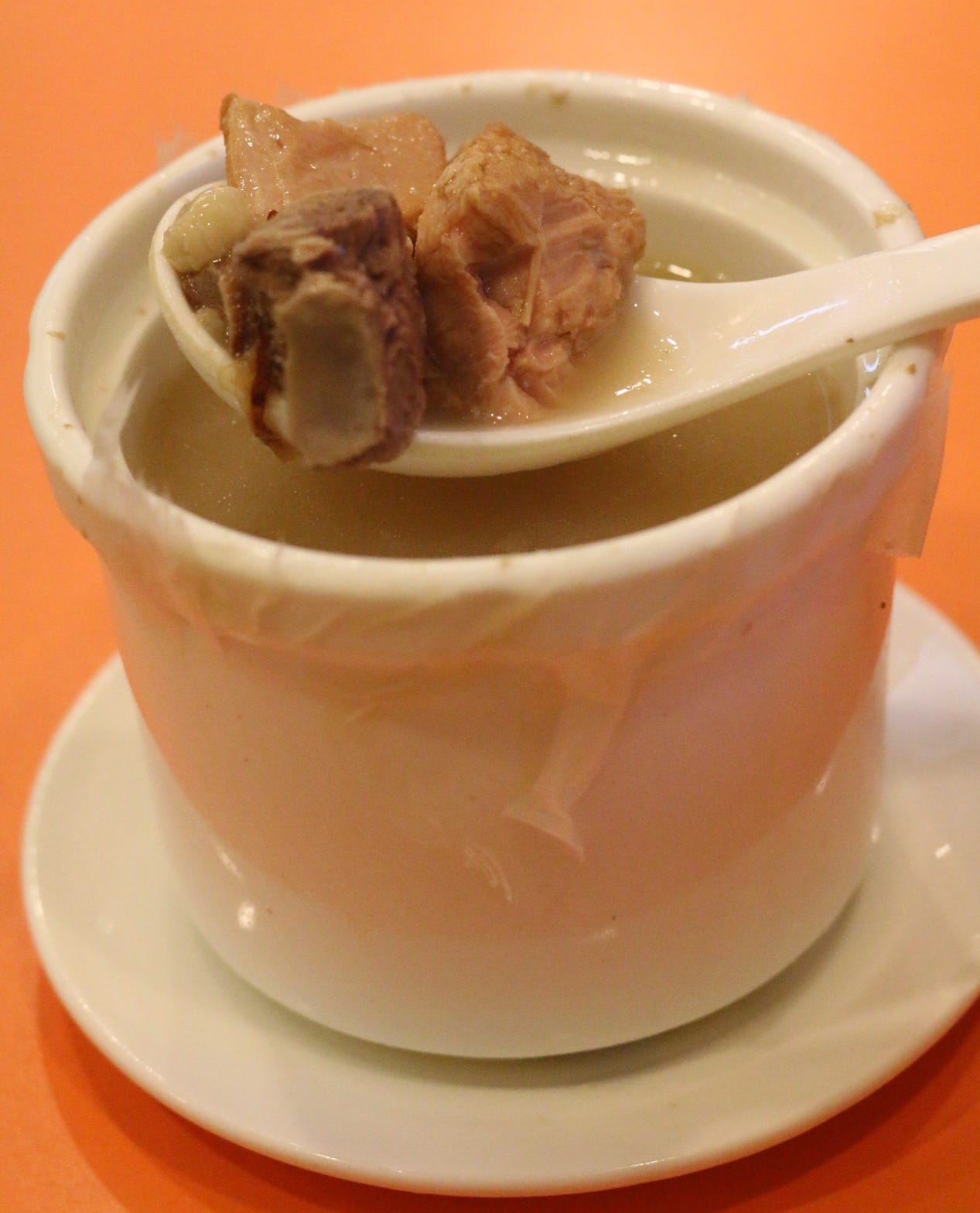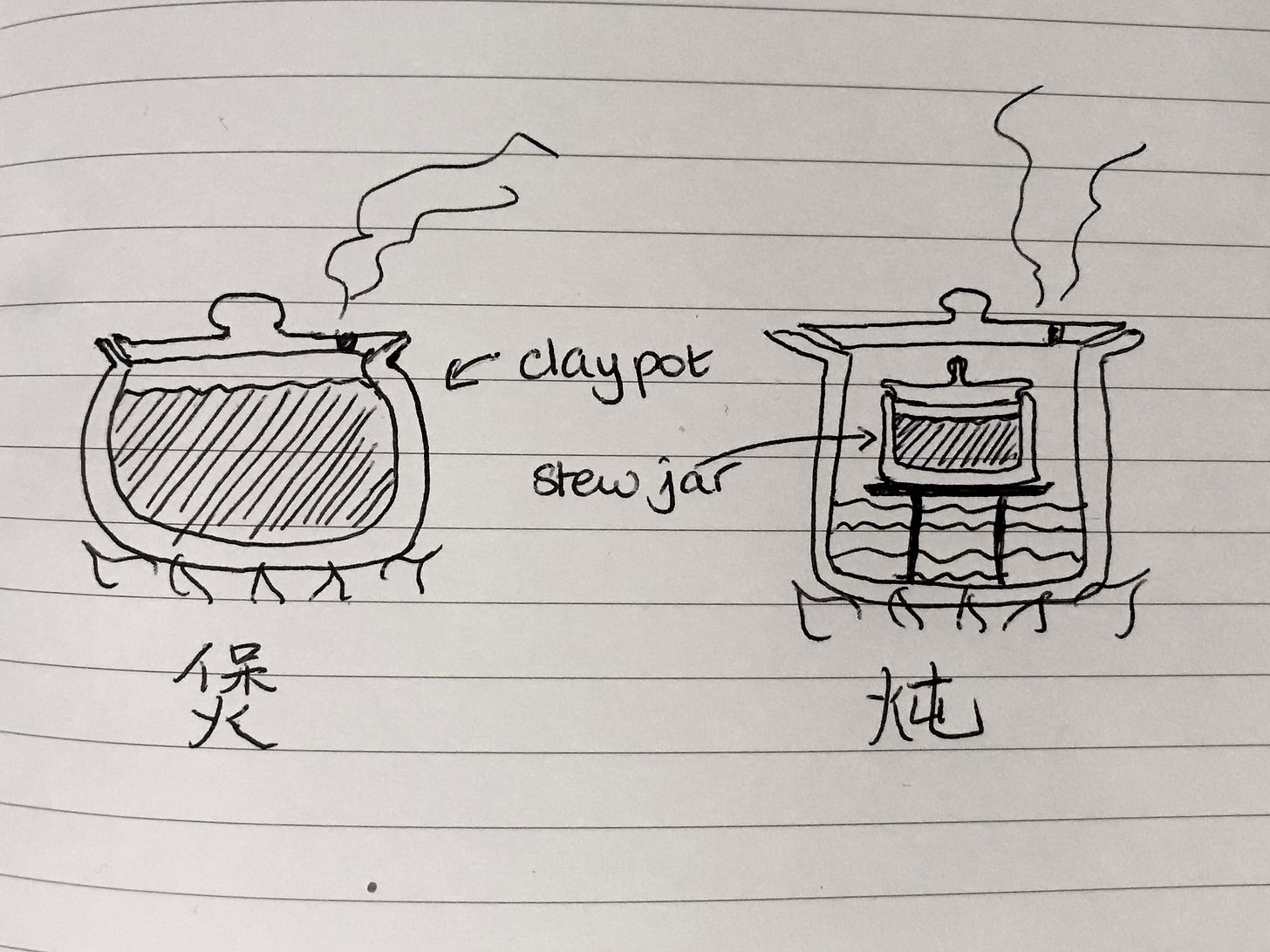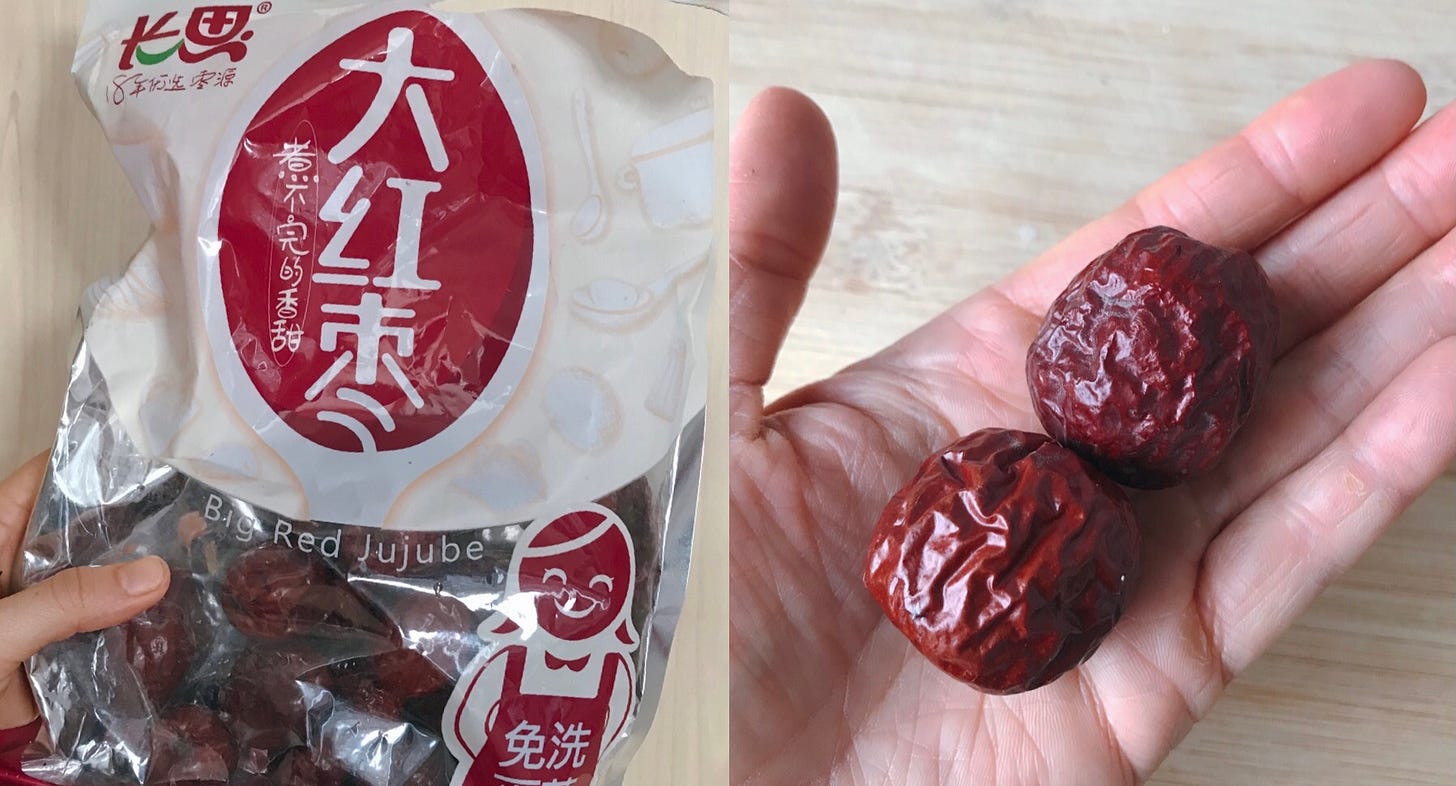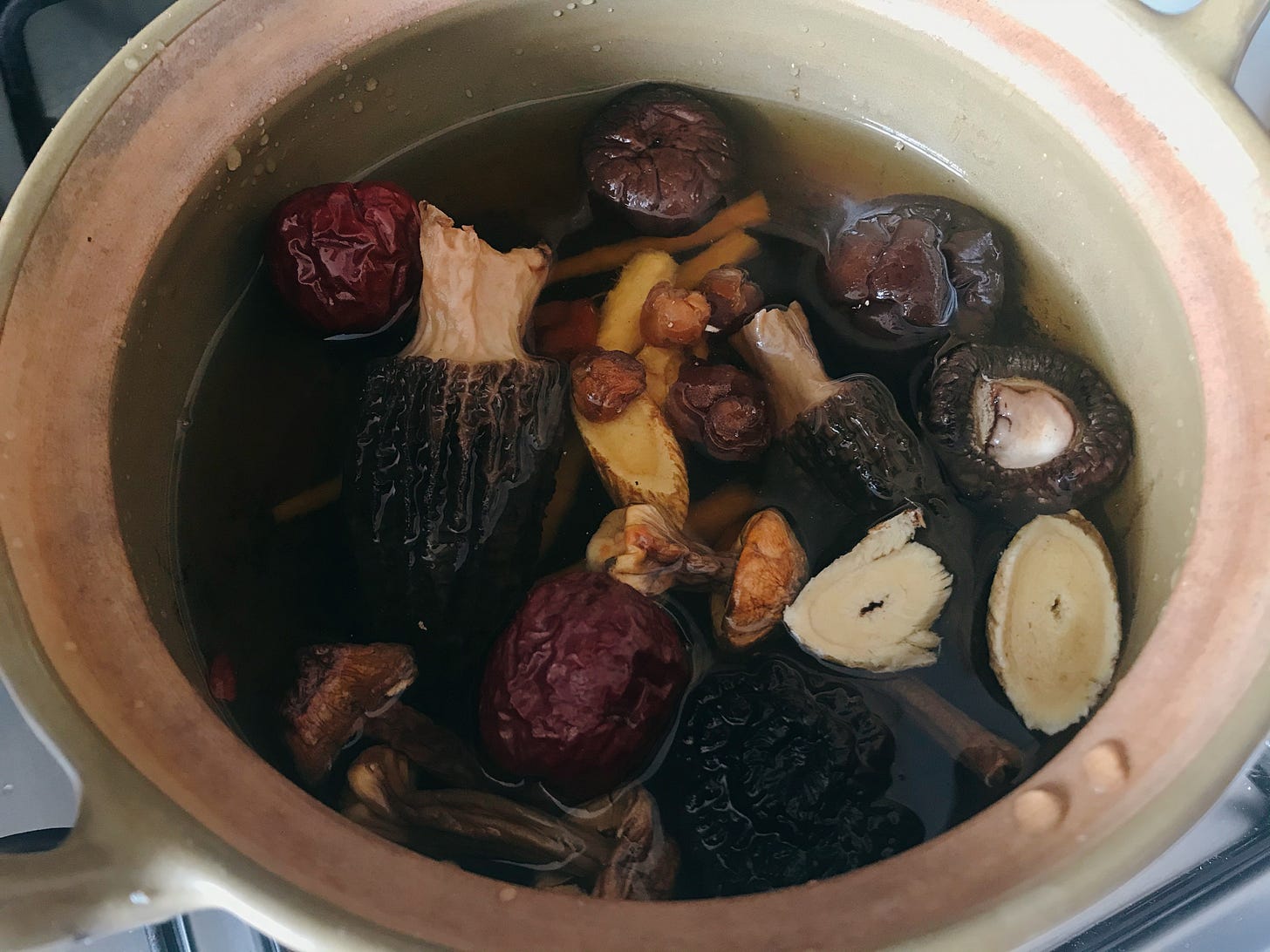When I think back to my childhood days in China, the most vivid memory comes in the form of smell.
Every day, after school ends and a 30-minute bus journey, I would walk up six flights of stairs to get home. It would be almost dinner time, and as I approach each floor, smells of different Chinese herbal ingredients would come seeping out through the door frames of each flat.
I would play the game of “guess the soup” — the second floor cooking sea kelp one day, the fourth floor stewing pork knuckles the next day.
As I walk up the final two flights of stairs, I start to smell the soup coming out from my grandparent’s kitchen. I usually take the time to think hard about this one, slowing my steps as I approach the door. Then, as soon as my grandparents let me in, I would run to the kitchen to check my answer.
My guess was always correct, but I never got bored of playing.
It is no myth in China that Cantonese people love their soups. ‘The Cantonese drink soup everyday’, and ‘everything can be put in a Cantonese soup’ are two commonly agreed principles on the subject; on my WeChat there is even a meme that says ‘if you were in Canton you would be soup-material’.

Aside from the cultural aspects, Cantonese soups are famous for how long and intricate the process can be. ‘Old fire’ soups 老火汤 is the common phrase, alluding to the slow simmering process that even the fire grows old*. The most common techniques are known as bou 煲 (pronounced like bow) and dun 炖 (pronounced like done), the first is long slow simmer directly in a pot, while the latter cooks the soup in a smaller stew jar steamed inside the larger pot and takes even longer.
For most daily cooking, we go with the simpler bou, so that is what I focus on in this newsletter. These slow-cooked soups are deeply personal, but I hope to provide a guide on how you can build the flavours in your perfect pot of chicken soup. I will discuss some basic rules, a very simple recipe, and some notes on flavours based on my own experience. Some common points of discussion will be in the ending FAQ.
(*Part of this is true — the most-loved and famous soups do indeed take hours to make, but there are also quick soups that could satisfy momentary cravings. )

The Basics
TL;DR: the soup should emphasise the umami sweetness 鲜甜 of chicken, and everything you do/add should aim to maximise this goal.
So, number one rule, get good chicken. Or a similar bird, but nothing too gamey. In the UK, my go-to is the Gressingham corn-fed poussin — easily accessible and perfect size for 1 or 2 people. More generally, fresh whole birds cleaned but with bones, reasonably fatty but not excessively so, and keep the skin on.
Second, simple is best — no heavy spices. For a basic chicken soup, the only spices I add are a few slices of ginger and one or two sprigs of spring onion. Onions are too strong in my opinion, but can work as a substitute if you don’t have spring onions at hand. No strong dried spices other than dried orange peel: no peppercorns or Sichuan peppercorns, no star-anise, no bay leaves, their flavours are too strong and distracting. However, if you know your herbs and know what flavour profile you are aiming for, go ahead.
Finally, add salt in the end if you need. I personally don’t, nor do I add MSG.
In terms of cookware, go for something that retains heat reasonably well. I use my old clay pot for nostalgia, but cast iron pots would be awesome. The size should be at least big enough so that the water you add will cover the entire bird. Ideally though, you should be able to have at least twice that amount of water, so that you won’t need to add water mid-cooking.
On cooking time, it will depend on the size and age of your chicken. Cook it until the meat is tender and tears off the bone easily, but not until the meat completely disintegrates.
A good bowl of soup should be clear, with thin layer of chicken fat floating on top, but not too thick such that it gets greasy. Drinking it on its own is how I usually have it, but you can also add cooked plain noodles or serve it with wontons.
Must-have Ingredients
Chicken - ideally whole bird (see FAQ for notes)
2-4 slices of ginger
1-2 sprigs of spring onion, washed and trimmed
A splash of Chinese cooking wine or mirin
Sweetness and umami components (see next section on flavours) - optional but highly recommended

Variations on Flavours
The two primary flavours of a traditional chicken soup are sweetness and umami, so most of the additions are there to enhance these. Chicken meat doesn’t exactly taste strong, so the key is to be gentle with your additions — the chicken is the star of the show, other ingredients complimentary but not overwhelming.
Sweetness
My go-to additions are: dried goji berries, red jujube, dried longan. Naturally sweet, dried fruits also provide some acidity, which will help to balance some of the chicken fat. Most dried fruits do not need to be rehydrated before cooking.
You don’t need all three for your soup, and if you are struggling to find these in your local oriental supermarket, you can add some carrots or sweetcorn instead.
Umami
Dried shiitake mushrooms are used most commonly here, but most dried mushrooms would work. You can also use meaty varieties of fresh mushrooms that will survive the long simmering, fresh king oyster and shiitake would work a treat. Compared to fresh mushrooms, dried ones will taste more intense, so use less in comparison.

Dried mushrooms need to be rehydrated prior to cooking. I usually rinse them a couple of times, and then soak them and keep the water for cooking the soup. One thing to note is that the water will take on some dark brown colour of the mushrooms, so the chicken soup will turn out to be darker too.
Another option is to add a handful of pork chunks with 20-30% fat. This will give the soup a fuller, bolder flavour.
Other
Some other common additions include raw peanuts, Chinese yam, and not-too-strong Chinese herbal ingredients. Peanuts will add a nutty fragrance, Chinese yam will soak up flavour. Coconut chunks are also common: the soup will remain clear but infused with sweet and refreshing coconut flavours and a more rounded texture.
Cooking the Soup
Prepare all your ingredients.
If blanching before cooking, do it here (see FAQ for details on blanching).
In your pot, add all dry ingredients and cold water. On high heat, bring to boil, add a splash of mirin/cooking wine, and boil for 5-10 minutes.
Skim the impurities that appears on the surface until soup is clear (FAQ shows a before/after).
Lid on, reduce heat to low, and simmer very gently for at least 30 minutes and up to 2 hours. Take care not to over-boil.
When the chicken is tender, serve.
FAQs
How do you eat the cooked chicken?
Parts with more fat content, i.g. legs and wings is usually eaten whilst drinking the soup. Chicken breasts can now be easily shredded, can be set aside, cooled, and use for a quick cucumber salad with sesame and chilli oil. Or dip any piece of chicken in a ginger and spring onion soy sauce.
Is blanching prior to cooking necessary?
In short, not really. In SE Asia, it is commonly done because the chickens aren’t cleaned as neatly, and the quality can vary much more. Blanching helps to remove impurities if you have concerns, and will yield a clearer soup.
If you do decide to blanch, start with your chicken immersed in cold water with a couple slices of ginger. Bring to boil, and boil for 3-10 minutes depending on the size of your bird. Lift out the bird, rinse in cold water, and set aside for cooking later.
How do I skim off impurities?
As the soup boils, frothy bubbles will form at the top. Use a spoon and carefully skim that off, and set aside. Don’t sweat over it though - you will never get rid of it 100%, it should take you a couple minutes to get to a pretty clear broth.
Can you add water mid-way?
Purists would say no, but in my opinion yes. Make sure you add boiling water though.
What about not using the whole bird?
That is completely fine and is commonly done in China, especially if a whole bird does not fit in the pot or you don’t like some parts of the chicken and feel bad about wasting food. I usually use the entire poussin because it does fit in my pot and chopping it beforehand is more hard work than tearing it apart when everything is so tender.












